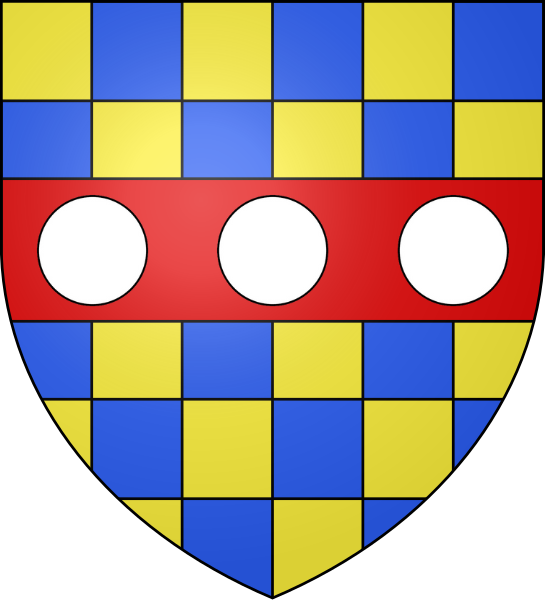|
La Flèche
La Flèche () is a town and commune in the French department of Sarthe, in the Pays de la Loire region in the Loire Valley. It is the sub-prefecture of the South-Sarthe, the chief district and the chief city of a canton, and the second most populous city of the department. The city is part of the Community of communes of the Pays La Flèche. The inhabitants of the town are called ''Fléchois''. The Prytanée National Militaire is located in La Flèche. Geography La Flèche is located on the Loir River and is also on the Greenwich Meridian. It is located halfway between Le Mans (45 km) and Angers. City communes * Sainte-Colombe * Saint-Germain-du-Val * Verron Neighboring municipalities * Bazouges Cré sur Loir * Crosmières * Villaines-sous-Malicorne * Bousse * Clermont-Créans * Mareil-sur-Loir * Thorée-les-Pins * Baugé-en-Anjou (Maine-et-Loire) History The origin of the name ''La Flèche'' is uncertain; the word ''flèche'' means "arrow" in French. Hist ... [...More Info...] [...Related Items...] OR: [Wikipedia] [Google] [Baidu] |
Subprefectures In France
In France, a subprefecture () is the Communes of France, commune which is the administrative centre of a Arrondissements in France, departmental arrondissement that does not contain the Prefectures in France, prefecture for its Departments of France, department. The term also applies to the building that houses the administrative headquarters for an arrondissement. Senate (France), Senate (in French). The civil servant in charge of a subprefecture is the subprefect, assisted by a Secretary (title), general secretary. Between May 1982 and February 1988, subprefects were known instead by the title Deputy Commissioner of the Republic (''commissaire adjoint de la République''). Where the administration of an arrondissement is carried out from a prefecture, the general secretary ... [...More Info...] [...Related Items...] OR: [Wikipedia] [Google] [Baidu] |
Mareil-sur-Loir
Mareil-sur-Loir (, literally ''Mareil on Loir'') is a commune in the Sarthe department in the region of Pays de la Loire in north-western France. See also *Communes of the Sarthe department The following is a list of the 352 communes of the Sarthe department of France. The communes cooperate in the following intercommunalities (as of 2025):Communes of Sarthe {{LaFlèche-geo-stub ... [...More Info...] [...Related Items...] OR: [Wikipedia] [Google] [Baidu] |
King Henry II Of England
Henry II () was King of England from 1154 until his death in 1189. During his reign he controlled England, substantial parts of Wales and Ireland, and much of France (including Normandy, Anjou, and Aquitaine), an area that altogether was later called the Angevin Empire, and also held power over Scotland and the Duchy of Brittany. Henry was the eldest son of Geoffrey Plantagenet, Count of Anjou, and Matilda, daughter of Henry I of England. By the age of fourteen, he became politically and militarily involved in his mother's efforts to claim the English throne, at that time held by her cousin Stephen of Blois. Henry's father made him Duke of Normandy in 1150, and upon his father's death in 1151, Henry inherited Anjou, Maine and Touraine. His marriage to Eleanor of Aquitaine brought him control of the Duchy of Aquitaine. Thus, he controlled most of France. Henry's military expedition to England in 1153 resulted in King Stephen agreeing, by the Treaty of Wallingford, to l ... [...More Info...] [...Related Items...] OR: [Wikipedia] [Google] [Baidu] |
Elias I, Count Of Maine
Elias I (also ''Hélie'' or ''Élie'') (died 11 July 1110), called de la Flèche or de Baugency, was the count of Maine, succeeding his cousin Hugh V. He was the son of Jean de la Flèche (also known as Jean de Beaugency) and Paula, daughter of Count Herbert I of Maine. Elias succeeded his father as the third lord of La Flèche. Life During the revolt of 1091, which installed his cousin Hugh V of Maine as count, Elias supported him, taking over the castle of Ballon, and imprisoning Hoel, bishop of Le Mans, at his castle of La Flèche. Hugh was finally unable to build a sustainable position in the county, and sold it to Elias for 10,000 shillings in 1092. After some peaceful years, he declared for the crusade in 1096, but later decided not to go, since William Rufus let him know that he planned to retake Maine. There was a first round of conflict in February–April 1098, where Robert of Bellême played a key role as William's ally. After some initial successes against R ... [...More Info...] [...Related Items...] OR: [Wikipedia] [Google] [Baidu] |
Fletcher (surname)
Fletcher is an Anglo-Norman surname of French, English, Scottish and Irish origin. The name is a regional ( La Flèche) and an occupational name for an arrowsmith (a maker and or seller of arrows), derived from the Old French ''flecher'' (in turn from Old French ''fleche'' "arrow"). The English word was borrowed into the Goidelic languages, leading to the development of the Scottish name "Mac an Fhleisteir" (also spelt "Mac an Fhleisdeir"), "the arrowsmith's son". While Fletcher was the occupational name, it was more often not the surname of a fletcher or arrowsmith professional. The progenitor of the family was Jean de la Flèche, a Norman noble from La Flèche, where he later succeeded his father to became its second seigneur (lord) and held its original castle. He was the youngest son of Seigneur Lancelin I de Beaugency (the first lord of Beaugency) and he married Paula of Maine, daughter of the Count of Maine. They were the parents of Elias I, Count of Maine and gr ... [...More Info...] [...Related Items...] OR: [Wikipedia] [Google] [Baidu] |
William The Conqueror
William the Conqueror (Bates ''William the Conqueror'' p. 33– 9 September 1087), sometimes called William the Bastard, was the first Norman king of England (as William I), reigning from 1066 until his death. A descendant of Rollo, he was Duke of Normandy (as William II) from 1035 onward. By 1060, following a long struggle, his hold on Normandy was secure. In 1066, following the death of Edward the Confessor, William invaded England, leading a Franco-Norman army to victory over the Anglo-Saxon forces of Harold Godwinson at the Battle of Hastings, and suppressed subsequent English revolts in what has become known as the Norman Conquest. The rest of his life was marked by struggles to consolidate his hold over England and his continental lands, and by difficulties with his eldest son, Robert Curthose. William was the son of the unmarried Duke Robert I of Normandy and his mistress Herleva. His Legitimacy (family law), illegitimate status and youth caused some difficulties for h ... [...More Info...] [...Related Items...] OR: [Wikipedia] [Google] [Baidu] |
England
England is a Countries of the United Kingdom, country that is part of the United Kingdom. It is located on the island of Great Britain, of which it covers about 62%, and List of islands of England, more than 100 smaller adjacent islands. It shares Anglo-Scottish border, a land border with Scotland to the north and England–Wales border, another land border with Wales to the west, and is otherwise surrounded by the North Sea to the east, the English Channel to the south, the Celtic Sea to the south-west, and the Irish Sea to the west. Continental Europe lies to the south-east, and Ireland to the west. At the 2021 United Kingdom census, 2021 census, the population was 56,490,048. London is both List of urban areas in the United Kingdom, the largest city and the Capital city, capital. The area now called England was first inhabited by modern humans during the Upper Paleolithic. It takes its name from the Angles (tribe), Angles, a Germanic peoples, Germanic tribe who settled du ... [...More Info...] [...Related Items...] OR: [Wikipedia] [Google] [Baidu] |
Yorkshire
Yorkshire ( ) is an area of Northern England which was History of Yorkshire, historically a county. Despite no longer being used for administration, Yorkshire retains a strong regional identity. The county was named after its county town, the city of York. The south-west of Yorkshire is densely populated, and includes the cities of Leeds, Sheffield, Bradford, Doncaster and Wakefield. The north and east of the county are more sparsely populated, however the north-east includes the southern part of the Teesside conurbation, and the port city of Kingston upon Hull is located in the south-east. York is located near the centre of the county. Yorkshire has a Yorkshire Coast, coastline to the North Sea to the east. The North York Moors occupy the north-east of the county, and the centre contains the Vale of Mowbray in the north and the Vale of York in the south. The west contains part of the Pennines, which form the Yorkshire Dales in the north-west. The county was historically borde ... [...More Info...] [...Related Items...] OR: [Wikipedia] [Google] [Baidu] |
Beaugency
Beaugency () is a Communes of France, commune in the Loiret Departments of France, department, Centre-Val de Loire, north-central France. It is located on the Loire river, upriver (northeast) from Blois and downriver from Orléans. History Medieval Aaron ben Joseph of Beaugency and Eliezer of Beaugency were Bible commentators and Rabbinic literature, rabbinical scholars, who flourished in the twelfth century in the city. Lords of Beaugency The lords of Beaugency attained considerable importance in the 11th, 12th and 13th centuries; at the end of the 13th century they sold the fiefdom to the Crown. They were responsible for building Château de Beaugency, which as originally a wooden structure, later replaced with a stone one by Lancelin I de Beaugency, the first lord of Beaugency. The massive original keep is today a ruined shell, surrounded by a mansion built later on in the 14th century. The family that became the lords or Seigneurs of Beaugency started with Landry sore. H ... [...More Info...] [...Related Items...] OR: [Wikipedia] [Google] [Baidu] |
Seigneur
A seigneur () or lord is an originally feudal title in France before the Revolution, in New France and British North America until 1854, and in the Channel Islands to this day. The seigneur owned a seigneurie, seigneury, or lordship—a form of title or land tenure—as a fief, with its associated obligations and rights over person and property. In this sense, a seigneur could be an individualmale or female, high or low-bornor a collective entity, typically a religious community such as a monastery, seminary, college, or parish. In the wake of the French Revolution, seigneurialism was repealed in France on 4 August 1789 and in the Province of Canada on 18 December 1854. Since then, the feudal title has only been applicable in the Channel Islands and for sovereign princes by their families. Terms The English seigneur is borrowed from the French , which descends from Middle French , from Old French (oblique form of ''sire''), from -4; we might wonder whether there's a point ... [...More Info...] [...Related Items...] OR: [Wikipedia] [Google] [Baidu] |
Jean De La Flèche
Jean de la Flèche, also known as Jean de Beaugency, Seigneur de la Flèche ( 1030 – {{{circa 1097) was an 11th-century nobleman. He was the son of Lancelin I de Beaugency{{sfn, LoPrete, 2007, loc=Chart 1 and Adelberg de Maine and was born about 1030 in La Flèche, Sarthe.{{efn, Amy Livingstone indicates Jean's mother was Paula of Maine{{sfn, Livingstone, 2018, loc=Genealogy 1:The lords of Beaugency Jean's father Lancelin I, was the first lord of both Beaugency and La Flèche. On his death, the older son Lancelin II was given Beaugency and Jean La Flèche.{{cn, date=August 2024 This was unusual for the time as normal the older son inherited all. The family of de la Flèche built the original wooden fort, Château de Beaugency, which was later replaced by a stone castle. The massive keep still survives as a ruined shell. A later mansion was built on the grounds of the castle. Jean de la Flèche became seigneur of La Flèche where he held its original castle (the current on ... [...More Info...] [...Related Items...] OR: [Wikipedia] [Google] [Baidu] |





